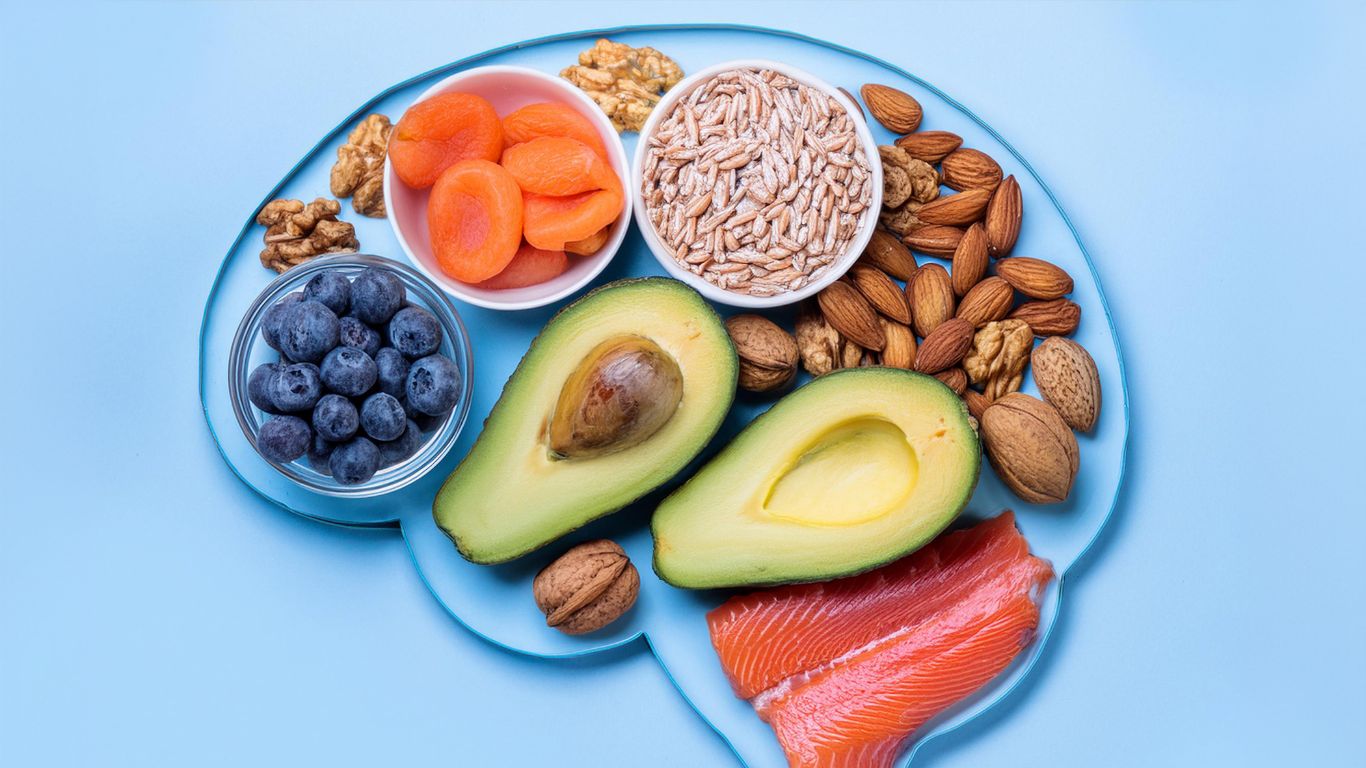Primary hypothyroidism is a condition characterized by an underactive thyroid. Your thyroid gland produces a lower than average amount of thyroid hormones, like T3 (triiodothyronine) and T4 (thyroxine).
The prevalence might be higher than you expected. 5 out of every 100 adults in the United States have hypothyroidism. Up to 60% are unaware they have hypothyroidism.
It’s more critical than ever to know what hypothyroidism looks like, where to get diagnosed, and how to reverse it permanently.
Even what conventional doctors call “permanent hypothyroidism” can be reversed most of the time. Here at PrimeHealth, our patients prove it!
The sooner you start addressing your hypothyroidism, the easier it will be to reverse.
If you may have hypothyroidism, sign up here for a free phone consultation! If you want to learn more, we spell everything out below in easy-to-understand language.
What is primary hypothyroidism?
Hypothyroidism means “underactive thyroid.” Your thyroid gland is a butterfly-shaped organ that produces and secretes hormones that control your metabolism.
The pituitary gland releases thyroid-stimulating hormone (TSH) to stimulate your thyroid. TSH tells your thyroid gland to produce and secrete T3 and T4 hormones.
If you have primary hypothyroidism, your thyroid isn’t producing enough T3 and T4, despite this signal from a properly functioning pituitary gland.
In primary hypothyroidism, your thyroid cannot maintain adequate T3 and T4 levels. The problem is with your thyroid. (In secondary and tertiary hypothyroidism, the problem lies more with your pituitary gland or hypothalamus.)
Primary vs. Secondary vs. Tertiary vs. Subclinical Hypothyroidism
What are primary, secondary, and tertiary hypothyroidism? The differences between primary, secondary, and tertiary hypothyroidism are quite simple. It all depends on which of the interconnected hormone-secreting glands is underactive.
- Primary hypothyroidism refers to a problem with the thyroid gland itself. Primary hypothyroidism results in low levels of thyroid hormones T3 and T4 and high circulating TSH.
- Secondary hypothyroidism is when the thyroid gland functions normally, but a disorder in the brain causes lower signaling of the pituitary gland. This pituitary dysfunction decreases secretion of TSH (thyrotropin), leading to low T3 and T4.
- Tertiary hypothyroidism is when the hypothalamus (another hormone-secreting gland) releases inadequate levels of thyrotropin-releasing hormone (TRH). Some still name this form of hypothalamic dysfunction “secondary hypothyroidism.”
You also may hear the term subclinical hypothyroidism. Subclinical hypothyroidism occurs when the thyroid is functioning normally, but the pituitary gland produces too much thyrotropin. This is often due to acute inflammation, like what you might see during a hospital stay. In some cases, this can progress into overt hypothyroidism.
Is Hashimoto’s disease primary hypothyroidism?
Hashimoto’s disease (also called Hashimoto’s thyroiditis or autoimmune thyroiditis) is an autoimmune disease closely related to hypothyroidism.
90% of primary hypothyroidism cases are a result of Hashimoto’s. However, they are not the same condition.
What are the symptoms of primary hypothyroidism?
Symptoms of hypothyroidism are different from person to person. Symptoms will also depend on how far along you are in the disease and your individual levels of TSH, T3, and T4.
Here are the typical clinical features you can expect to see in cases of primary hypothyroidism:
- Enlarged thyroid (goiter)
- Fatigue
- Weight gain
- Muscle and joint pain
- Hoarse voice, snoring
- Puffiness in the face
- Dry skin
- Thinning hair
- Brittle nails
- Cold intolerance
- Depression
- Constipation
- Myxedema coma, in severe situations
What is the most common cause of primary hypothyroidism?
The most common cause of primary hypothyroidism is Hashimoto’s disease — 90 percent of cases stem from this condition.
Several risk factors can trigger Hashimoto’s disease and lead to hypothyroidism:
- Hormone imbalance — If your hormone levels are out of whack (not only your thyroid hormone levels), this can cause Hashimoto’s to flare up. Thyroid hormone replacement therapy may solve this problem.
- Infections — Tick-borne infections (like Lyme disease) and viral infections (like Epstein-Barr) may lead to Hashimoto’s disease and, therefore, hypothyroidism.
- Food sensitivities — Food allergens can trigger Hashimoto’s disease. For instance, celiac disease (a gluten allergy) has been linked to an increased risk of autoimmune disease, such as Hashimoto’s.
- Nutrient deficiency — Nutrient deficiencies can trigger Hashimoto’s disease. The most common nutrient deficiency that leads to primary hypothyroidism is iodine deficiency.
- Toxin exposure — Harmful toxins wreak havoc on your health, especially your thyroid. Heavy metal exposure, mold toxins, and exposure to chemicals like pesticides and other industrial chemicals can trigger Hashimoto’s. Daily workplace exposure to toxins is one possible cause of hypothyroidism that should not be overlooked.
- Leaky gut — When the lining in your gut is chronically inflamed, the tight junction proteins in your intestinal wall may weaken and allow toxins to get into the bloodstream. Called leaky gut syndrome, this is both a cause and a symptom of Hashimoto’s and, consequently, primary hypothyroidism. To learn from experts about leaky gut and take immediate action to optimize your gut health, join our online Prime Gut Course.
Other Causes of Hypothyroidism
Which hormone is deficient in primary hypothyroidism? At its root, the cause of primary hypothyroidism is a deficiency in T3 or T4 hormones. The cause of central hypothyroidism (including secondary or tertiary hypothyroidism) is a deficiency in TSH or TRH.
- Medication side effects (like with amiodarone or lithium)
- Postpartum thyroiditis
- Thyroid injury
- Subacute thyroiditis
- Thyroidectomy
- Thyroid cancer
- Radioactive iodine therapy
- Over-treatment of Graves’ disease, which itself causes hyperthyroidism (overactive thyroid)
Diagnosis of Hypothyroidism Primary
How do you diagnose primary hypothyroidism? You diagnose primary hypothyroidism by testing thyroid hormone levels with blood tests.
When discussing the diagnosis of thyroid disorders, there are conventional methods, and there are functional methods. We fall into the functional approach here at Prime Health Denver.
Some medical workers only test for TSH levels and free T4 levels before a diagnosis. Conventional healthcare providers might use these 2 methods to diagnose thyroid disease:
- Thyroid function test — makes sure TSH levels are within a normal range, and you don’t have low serum T3 or T4 levels. (When your thyroid is underactive, your pituitary gland will make more TSH. Higher levels of TSH may indicate hypothyroidism.)
- Antibody test — identifies certain antibodies that your body would release if you have Hashimoto’s. (One in ten people have these antibodies and normal thyroid function.)
However, at PrimeHealth, we take a comprehensive approach to diagnosis.
With safe blood tests, we assess the following:
- Serum TSH levels
- Total T4/T3
- Free T4/T3
- Reverse T3
- Anti-thyroid peroxidase (TPO), anti-thyroglobulin (Hashimoto’s antibodies)
- Thyroid-binding globulin (TBG)
The normal range of TSH levels should fall between 0.4 mIU/L and 4.0 mIU/L (milli-international units per liter). However, the optimal reference range for TSH levels is 0.5 to 2.5 mlU/L.
If your job involves working around toxins, we could focus diagnostics on identifying those toxins.
For pregnant women, we approach diagnosis and treatment with that in consideration.
We sometimes also check for hyperthyroidism (hyper, not hypo). Hyperthyroidism exhibits a few similar symptoms. However, over-treating an overactive thyroid can trigger an underactive thyroid.
Diagnostic plans should be individualized for each unique patient. Diagnosis can take hours of investigation, but we believe it’s worth it to be able to, in many cases, permanently reverse hypothyroidism.
Conventional Treatments & Limitations
How is primary hypothyroidism treated? It depends on who you ask.
Conventional medicine says primary hypothyroidism can almost never be reversed. These doctors go about the treatment of hypothyroidism by subscribing pharmaceuticals indefinitely.
An endocrinologist might prescribe a dose of levothyroxine (brand name Synthroid), a synthetic T4 hormone. Levothyroxine is the most common hypothyroidism medication.
In 2004, the FDA approved the use of generic levothyroxine in place of brand-name Synthroid. However, the Endocrine Society, the American Thyroid Association, and the American Association of Clinical Endocrinologists did not agree with the FDA’s conclusion that generic levothyroxine was as high-quality as the brand-name equivalent.
PrimeHealth would disagree further, arguing that traditional medication, including levothyroxine, is often unnecessary and sometimes harmful.
Here is a condensed list of side effects for levothyroxine:
- Heart disease
- Bradycardia
- Anxiety
- Migraine
- Alopecia
- Fatigue
- Insomnia
- Heat sensitivity
- Diarrhea
How to Reverse Hypothyroidism (Hypothyroidism Treatment Guidelines)
Is primary hypothyroidism permanent? No, primary hypothyroidism is not permanent. Although mainstream endocrinologists may say hypothyroidism is permanent, we’ve seen patients whose “permanent” thyroid disease is reversed through diagnosis and treatment of root causes.
Is primary hypothyroidism curable? Yes, primary hypothyroidism is curable, according to the thyroid experts at PrimeHealth. We have seen patients with “incurable” hypothyroidism recover permanently.
It’s vital to note that each person is dealing with a specific set of triggers when addressing hypothyroidism. There’s not just a one-size-fits-all approach.
That said, here is a brief explanation on how to permanently reverse primary hypothyroidism and become euthyroid (have a normal functioning thyroid).
Hypothyroidism Diet
First, a hypothyroidism diet can be pretty restrictive, in part to determine if you have any food sensitivities. We suggest the Autoimmune Paleo Diet for the best results, which should be used for anywhere between 1-6 months.
Recent research continues to link the microbiome, or bacterial balance in the gut, to primary hypothyroidism, so what you eat can be significant for your symptoms.
For expert assistance and immediate action steps, join our foundational Prime Gut Health online course.
Foods To Avoid
- Dairy
- Grains
- Nuts, seeds
- Nightshade vegetables
- Vegetable oils
- Sugar
- Alternative sweeteners
- Processed foods
- Alcohol
Foods To Eat
- Proteins
- Non-nightshade vegetables
- Cruciferous vegetables
- Herbs like garlic, turmeric
- Green tea
- Kombucha
- Small amounts of honey, maple syrup, fruits
Supplements
There are also natural dietary supplements that can help reverse primary hypothyroidism:
- Iodine helps prevent autoimmune diseases like Hashimoto’s. Iodine deficiency is a leading cause of goiters, a thyroid disorder.
- Probiotics treat leaky gut, which is a significant risk factor for Hashimoto’s and hypothyroidism.
- Glutathione fights oxidative stress, which can increase the severity of hypothyroidism if left unchecked, according to the Indian Journal of Endocrinology and Metabolism.
Reducing Stress
Finally, stress is a major risk factor in developing thyroid dysfunction. Alleviate stress with:
Safe Medication
If we feel medication is safe and necessary, we prescribe levothyroxine (Synthroid), desiccated thyroid medication of T4 and T3 (ratio 4:1), or a compounded synthetic combination of T4 and T3 that can be personalized to the patient.
While desiccated thyroid gland medications, like Armour Thyroid and Nature Throid, offer a more complete composition of T4, T3, and the less commonly known thyroid hormone T2, these medications may cause an autoimmune reaction in people with Hashimoto’s thyroiditis.
It’s beneficial to be able to compound medications with synthetic T3 (liothyronine) and T4 in the ratio of our choosing. That gives a complete thyroid treatment without any added autoimmune reactivity, which is tailored to the individual.
Important: Several substances can negatively affect levothyroxine efficacy, such as iron, calcium, and even coffee.
Outlook for Patients with Primary Hypothyroidism
We at PrimeHealth believe primary hypothyroidism — sometimes called permanent hypothyroidism — can be reversed. The long-term outlook for hypothyroid patients should be hopeful.
A hypothyroidism-healing Autoimmune Paleo diet can be tough to get used to. However, without the side effects of all those pharmaceuticals, your quality of life should increase overall. Your body will probably thank you for the healthier diet anyway.
Primary hypothyroidism is often reversible, unlike what conventional doctors might say. Our patients at PrimeHealth are the proof.
If you think you have hypothyroidism (and live in the greater Denver area), sign up here for a free 30-minute consultation!
Sources
- Kim, H. S., Unalp-Arida, A., Ruhl, C. E., Choung, R. S., & Murray, J. A. (2019). Autoimmune and allergic disorders are more common in people with celiac disease or on a gluten-free diet in the United States. Journal of clinical gastroenterology, 53(10), e416-e423. Abstract: https://www.ncbi.nlm.nih.gov/pubmed/30045167
- Anderson, J. M., & Van Itallie, C. M. (2009). Physiology and function of the tight junction. Cold Spring Harbor perspectives in biology, 1(2), a002584. Full text: https://cshperspectives.cshlp.org/content/1/2/a002584.full
- Kapil, U. (2007). Health consequences of iodine deficiency. Sultan Qaboos University Medical Journal, 7(3), 267. Full text: https://www.ncbi.nlm.nih.gov/pmc/articles/PMC3074887/
- Gaitonde, D. Y., Rowley, K. D., & Sweeney, L. B. (2012). Hypothyroidism: an update. South African Family Practice, 54(5), 384-390. Full text: https://medpharm.tandfonline.com/doi/pdf/10.1080/20786204.2012.10874256
- Eghtedari, B., & Correa, R. (2019). Levothyroxine. In StatPearls [Internet]. StatPearls Publishing. Full text: https://www.ncbi.nlm.nih.gov/books/NBK539808/#_article-24233_s4_
- Duntas, L. H. (2015). The role of iodine and selenium in autoimmune thyroiditis. Hormone and Metabolic Research, 47(10), 721-726. Full text: https://www.thieme-connect.com/products/ejournals/html/10.1055/s-0035-1559631
- Mu, Q., Kirby, J., Reilly, C. M., & Luo, X. M. (2017). Leaky gut as a danger signal for autoimmune diseases. Frontiers in immunology, 8, 598. Full text: https://www.ncbi.nlm.nih.gov/pmc/articles/PMC5440529/
- Su, X., Zhao, Y., Li, Y., Ma, S., & Wang, Z. (2020). Gut dysbiosis is associated with primary hypothyroidism with interaction on gut-thyroid axis. Clinical Science, 134(12), 1521-1535. Abstract: https://pubmed.ncbi.nlm.nih.gov/32519746/
- Chakrabarti, S. K., Ghosh, S., Banerjee, S., Mukherjee, S., & Chowdhury, S. (2016). Oxidative stress in hypothyroid patients and the role of antioxidant supplementation. Ind J Endocrinol Metab, 20(5), 674. Full text: https://www.ncbi.nlm.nih.gov/pmc/articles/PMC5040049/
- Olivares, E. L., Silva-Almeida, C., Pestana, F. M., Sonoda-Côrtes, R., Araujo, I. G., Rodrigues, N. C., … & Rocha, F. F. (2012). Social stress-induced hypothyroidism is attenuated by antidepressant treatment in rats. Neuropharmacology, 62(1), 446-456. Abstract: https://www.ncbi.nlm.nih.gov/pubmed/21903114
- Hirotsu, C., Tufik, S., & Andersen, M. L. (2015). Interactions between sleep, stress, and metabolism: From physiological to pathological conditions. Sleep Science, 8(3), 143-152. Full text: https://www.ncbi.nlm.nih.gov/pmc/articles/PMC4688585/
- Thompson, C. W., Roe, J., Aspinall, P., Mitchell, R., Clow, A., & Miller, D. (2012). More green space is linked to less stress in deprived communities: Evidence from salivary cortisol patterns. Landscape and urban planning, 105(3), 221-229. Full text: https://www.sciencedirect.com/science/article/pii/S0169204611003665






